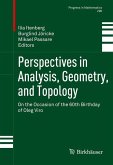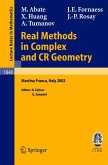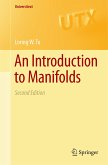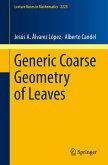The theory of rigid (analytic) spaces, originally invented to describe degenerations, reductions, and moduli of algebraic curves and abelian varieties, has undergone significant growth in the last two decades; today the theory has applications to arithmetic algebraic geometry, number theory, the arithmetic of function fields, and p-adic differential equations. This work, a revised and greatly expanded new English edition of the earlier French text by the same authors, is an accessible introduction to the theory of rigid spaces and now includes a large number of exercises.
Key topics:
- Chapters on the applications of this theory to curves and abelian varieties: the Tate curve, stable reduction for curves, Mumford curves, Néron models, uniformization of abelian varieties
- Unified treatment of the concepts: points of a rigid space, overconvergent sheaves, Monsky--Washnitzer cohomology and rigid cohomology; detailed examination of Kedlaya’s application of the Monsky--Washnitzer cohomology to counting points on a hyperelliptic curve over a finite field
- The work of Drinfeld on "elliptic modules" and the Langlands conjectures for function fields use a background of rigid étale cohomology; detailed treatment of this topic
- Presentation of the rigid analytic part of Raynaud’s proof of the Abhyankar conjecture for the affine line, with only the rudiments of that theory
A basic knowledge of algebraic geometry is a sufficient prerequisite for this text. Advanced graduate students and researchers in algebraic geometry, number theory, representation theory, and other areas of mathematics will benefit from the book’s breadth and clarity.
Rigid (analytic) spaces were invented to describe degenerations, reductions, and moduli of algebraic curves and abelian varieties. This work, a revised and greatly expanded new English edition of an earlier French text by the same authors, presents important new developments and applications of the theory of rigid analytic spaces to abelian varieties, "points of rigid spaces," étale cohomology, Drinfeld modular curves, and Monsky-Washnitzer cohomology. The exposition is concise, self-contained, rich in examples and exercises, and will serve as an excellent graduate-level text for the classroom or for self-study.
Key topics:
- Chapters on the applications of this theory to curves and abelian varieties: the Tate curve, stable reduction for curves, Mumford curves, Néron models, uniformization of abelian varieties
- Unified treatment of the concepts: points of a rigid space, overconvergent sheaves, Monsky--Washnitzer cohomology and rigid cohomology; detailed examination of Kedlaya’s application of the Monsky--Washnitzer cohomology to counting points on a hyperelliptic curve over a finite field
- The work of Drinfeld on "elliptic modules" and the Langlands conjectures for function fields use a background of rigid étale cohomology; detailed treatment of this topic
- Presentation of the rigid analytic part of Raynaud’s proof of the Abhyankar conjecture for the affine line, with only the rudiments of that theory
A basic knowledge of algebraic geometry is a sufficient prerequisite for this text. Advanced graduate students and researchers in algebraic geometry, number theory, representation theory, and other areas of mathematics will benefit from the book’s breadth and clarity.
Rigid (analytic) spaces were invented to describe degenerations, reductions, and moduli of algebraic curves and abelian varieties. This work, a revised and greatly expanded new English edition of an earlier French text by the same authors, presents important new developments and applications of the theory of rigid analytic spaces to abelian varieties, "points of rigid spaces," étale cohomology, Drinfeld modular curves, and Monsky-Washnitzer cohomology. The exposition is concise, self-contained, rich in examples and exercises, and will serve as an excellent graduate-level text for the classroom or for self-study.
"... beginners will appreciate the numerous exercises and the gentle progression of the first four chapters, from the one-variable calculus on the projective line, through the algebraic study of general affinoid algebras, to the definition of general rigid varieties and their analytic reductions. And each of the last five chapters can be used as the basis for a student workshop at the advanced graduate level." -- Mathematical Reviews
"When I was a graduate student, we used the original (French) version of this book in an informal seminar on rigid geometry. It was quite helpful then, and it is much better now. The authors have updated the material, added quite a bit on new applications and new results, and changed languages. Despite the competition it now has, this is still one of the best places in which to start learning this theory." -- MAA Reviews
"The book under review gives a very complete and careful introduction into the technical foundations of the theory and also treats in detail the rigid analytic part of some of the important applications which the theory has found in recent years in number theory and geometry. The exposition is self contained, the authors only assume some familarity with basic algebraic geometry. . . Many of the subjects treated in this book are not easily available from the literature. The book which contains an extensive bibliography is a very valuable source for everyone wishing to learn about rigid geometry or its applications." -- ---Monatshefte für Mathematik
"When I was a graduate student, we used the original (French) version of this book in an informal seminar on rigid geometry. It was quite helpful then, and it is much better now. The authors have updated the material, added quite a bit on new applications and new results, and changed languages. Despite the competition it now has, this is still one of the best places in which to start learning this theory." -- MAA Reviews
"The book under review gives a very complete and careful introduction into the technical foundations of the theory and also treats in detail the rigid analytic part of some of the important applications which the theory has found in recent years in number theory and geometry. The exposition is self contained, the authors only assume some familarity with basic algebraic geometry. . . Many of the subjects treated in this book are not easily available from the literature. The book which contains an extensive bibliography is a very valuable source for everyone wishing to learn about rigid geometry or its applications." -- ---Monatshefte für Mathematik








